Competitive DanceSport
After dancing and taking lessons for a while, many dancers decide they want to test themselves against other dancers. Competition is a natural progression for any sport. Dance is no exception.
All dance competitions are organized events. The competitors, whether couples or individuals, will perform a choreographed routine designed by their teacher. Each routine is based on a specific list of steps. This list of steps is called a Syllabus, and there is a syllabus for each dance in both disciplines of Ballroom and Latin. You can see the Canadian Dance Federation’s Syllabus for Ballroom and Latin here.
Age categories are as follows:
- Juvenile – 11 years old and under
- Junior – 12-15 years old
- Youth – 16-18 years old
- Adult – 19 years and up
- Senior 1 – 35 years and up
- Senior 2 – 45 years and up
- Senior 3 – 55 years and up
- Professional – Adult, no age limit
As in any competitive sport, state of mind is important. At Dance With Us Ottawa, we believe in not only training the body, but training the mind too. Before you take to the floor, as a junior, adult, or pro-am student, we will help you prepare. We will take you through the entire process, from hair-do to dress, from music to curtsey; and we will be there with you all the way.
Competition is fun and rewarding — especially if you are prepared, ready, and in a winning position!
In Ballroom and Latin Dance, there are four categories of competition to compete in:
- Juvenile, Junior, and Youth Competition for Children
- Amateur Adult Competition
- Pro-Am Competition
- Professional
Juvenile, Junior, and Youth Dance Competition
Dancesport grows through it’s children. Kids start as young and 4 or 5 years old and by the time they are teens, they are usually competing at many events.
Juvenile categories are for children 11 years old and under — in both the Ballroom and Latin disciplines. Many children choose to compete in both disciplines. They are referred to as 10-Dance competitors.
There are strict rules governing conduct, dress, and etiquette for Juvenile competitors. These rules are in place to assist parents in managing costs — so important while children are growing.
Junior competitors are aged 12 to 15. The same disciplines and categories exist as Juveniles, but the rules different.
Youth competitors are aged 16 to 18. The same disciplines and categories exist as Juveniles, but the rules different.
All Juvenile, Junior, and Youth competitors are amateur — they do not qualify for any purse money or prize at their events.
Amateur Adult Competition
Amateur adult competition is the natural progression for folks who have taken up social dance lessons and have decided to try their hand at competing. Adult competitions are organized by skill level and age.
Starting at age 19, adults can compete in amateur or pro-am categories.
The skill levels are Newcomer, Pre-Bronze, Bronze, Silver, and Gold. Each of these levels will be divided up into age groups so that people will be competing with their peers.
Competitive routines are choreographed by your teacher and often between couples, but not necessarily. Many singles come together with similar technical levels to form partnerships to compete. It really adds to the experience of dance.
Amateur couples are subject to dress restrictions like the children. Levels up to Bronze are not permitted to wear fancy costumes. This helps new competitors in managing their costs.
Many competitions also reward first-time amateur competitors by waiving their registration fees.
Pro-Am Competition
Pro-Am Competition is when a teacher competes with their student. This is extremely popular in North America, and getting more and more popular in Europe.
Pro-Am events are organized just like the Adult Amateur events, by age and level. However, only the student is judged in the competition. Also male students will compete against other male students and ladies will compete against other ladies.
It is not uncommon to see one teacher dancing with many students — because that teacher will have students at different levels, in different age groups. Even children can compete with their teacher if they do not have an amateur partner.
The advantage of Pro-Am is that if you are not a couple, or do not have access to a partner, then you can still have the competition experience.
Pro-Am competitors get to wear all the fancy costumes the professionals do — there is no restriction.
Pro-Am tends to be more expensive than Amateur competition. When you compete with your teacher, not only are you paying your registration fees, but you will also be paying teacher fees.
Contact us to find out more information on competitive training!















